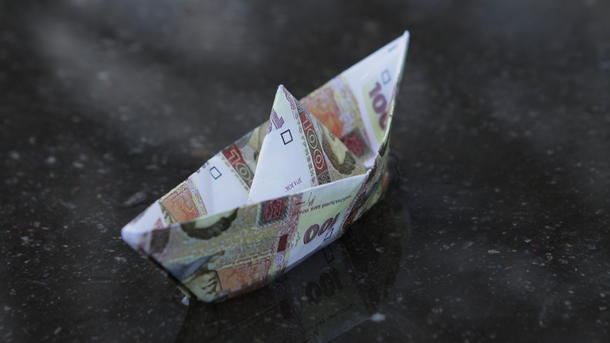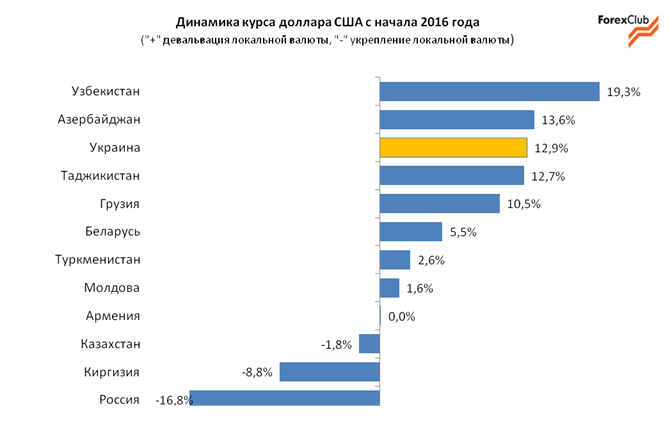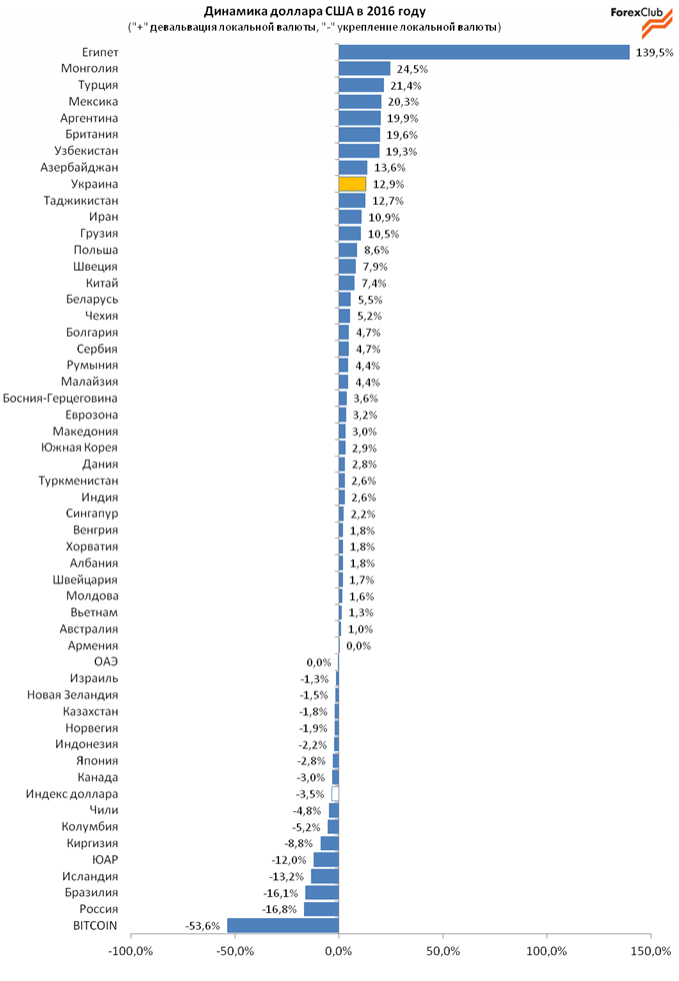
By the end of 2016 the CIS currencies depreciated against the dollar amid strengthening of the American currency in all markets.
The greatest strengthening showed Russian ruble (16.8%) and Kyrgyzstan som (8.8 per cent). Leaders of the fall were Uzbekistan sum (19,3%), Azerbaijani manat (13,6%) and Ukrainian hryvnia (12.9 per cent). This is evidenced by the quarterly research and analytical Department GK “Forex Club”.

So, for the year hryvnia depreciated by 12.9%. The pressure on the Ukrainian currency had a negative trade balance, the expansion of critical import at the beginning of the heating period, price volatility in commodity markets, and the nationalization of PrivatBank, analysts say.
“Despite some stabilization, the restoration of the Ukrainian economy is uncertain and continue to pose external risks. A trade war between the US and China could trigger a global crisis, the output of which countries will see the devaluation of the national currency. And Ukraine will not be able to be on the side of this devaluation of the tsunami,” – said a senior analyst “Forex Club” Andrew Shevchishin.
The hryvnia for the year has depreciated by 12.9%.
Pressure on the hryvnia, according to the expert, will also have the rising cost of hydrocarbons to the world markets, which will raise the cost of critical imports.
“In the baseline scenario, we expect average annual rate of 27 – 28,5 UAH. for a dollar. However, when negative developments, the hryvnia may depreciate to 28 – 30.5 UAH per dollar, and more, depending on the policy of the NBU and the government,” predicts Shevchishin.
The Russian ruble has appreciated by 16.8% amid the recovery in oil prices by more than 50% and increasing oil production and export uglevodorodov. The Kyrgyz som has been strengthened, with growth in cross-border income of physical persons from Russia that was in the 3rd quarter of 2016 544 million dollars.
Global trends in world currency markets
The US dollar index in 2016 has increased to its highest levels since 2002. Developed countries ‘ currencies came under pressure amid divergent policies of global Central banks and currencies of developing countries due to capital outflows.
A world leader was the devaluation of the Egyptian pound (139,5%), Mongolian Tugrik (24,5%), Turkish Lira (21,4%) and Mexican peso (20.3 per cent).

The greatest strengthening in 2016 showed the cryptocurrency Bitcoin in connection with a decrease in the remuneration of miners for each block, which took place in July, with the result that the rate of emission decreased by two times the constant demand. Interest in Bitcoin has also increased from China on the background of toughening of currency regulation, and in India as a result of the monetary reform. Cryptocurrency is viewed as a means of avoiding government regulation, currency transfers, as well as an asset of refuge from the devaluation (especially in China, where the yuan has weakened 7.4%).







